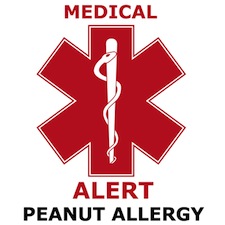Doctors’ Notes
BackPeanut Allergy
It’s true: There are more kids with peanut allergies now than there used to be. Some estimates suggest that nearly 1% of all kids are allergic to peanuts, and that the number tripled between 1997 and 2008. In fact, all allergies are increasing, and some form of food allergy now affects nearly 1 in every 13 kids.
We don’t know exactly why peanut (and other food) allergies are on the rise. This is an area of active research, and one theory suggests it may be because we live in such a clean, germ-free environment. Allergic reactions are basically over-reactions of our immune system. So, for genetically susceptible people, the idea goes that our immune systems may be acting-out – like bored kids – and treating peanut protein like a germ.
Reaction & Medication
Unfortunately, the result of this over-reaction can be severe. When peanut-allergic individuals ingest peanut, they develop a reaction that can range anywhere from itchy hives to a life-threatening drop in blood pressure, respiratory failure, and death. How severe a reaction will be is unpredictable. It may be different from the way the allergic person has reacted in the past.
 The reaction is usually quite quick. Typically symptoms begin within minutes, although rarely they can be delayed by a few hours. Life-threatening reactions, with tongue and throat swelling, difficulty breathing, and dropping blood pressure, are called anaphylaxis. The treatment for anaphylaxis is epinephrine, a medication that has to be given as an injection. Epi-Pens and Auvi-Q devices are the most common ways to do this, and peanut-allergic kids should have these devices on-hand at school and during activities where peanuts could be encountered.
The reaction is usually quite quick. Typically symptoms begin within minutes, although rarely they can be delayed by a few hours. Life-threatening reactions, with tongue and throat swelling, difficulty breathing, and dropping blood pressure, are called anaphylaxis. The treatment for anaphylaxis is epinephrine, a medication that has to be given as an injection. Epi-Pens and Auvi-Q devices are the most common ways to do this, and peanut-allergic kids should have these devices on-hand at school and during activities where peanuts could be encountered.
It’s important for everyone to know that the medicine in Epi-Pens and similar devices is not harmful. It’s not dangerous to treat a child with an Epi-Pen, even if you’re not sure they are having anaphylaxis. In fact, one of the most tragic scenarios in anaphylaxis is a bunch of bystanders holding an Epi-Pen that they’re all afraid to use.
Precautions at School & Child Care
If you’re the parent of a child with a peanut allergy, letting your child eat with friends at school or day care can be nerve-wracking. Even if you’re careful about choosing safe foods, you worry about the food in the lunchboxes of all the other kids.
If you don’t have food-allergic kids, the peanut guidelines in schools, preschools, day care centers, and after-school activities can be frustrating. Sometimes class treats have to be peanut-free. Sometimes parent-provided treats are prohibited altogether. And sometimes all kids are restricted from bringing peanut-containing foods in their lunchboxes. It’s already difficult enough to pack nutritious lunches for picky young eaters. Having to keep them peanut-free adds to the challenges.
Until we have better methods for preventing allergic reactions to peanut, these inconveniences are an important safeguard. After all, if your child could go into anaphylaxis just from sharing a cookie with his friend at lunch, you would be frightened too.
Sometimes parents ask why it’s just peanuts (or sometimes peanuts and tree nuts) that are restricted by these guidelines. If there are milk-allergic kids in the class, or kids with wheat allergy, why aren’t those foods restricted? The reasoning has to do with the severity of peanut allergy reactions, how quickly they strike, and how common they are.
That being said, MOST kids are not allergic, so most kids can eat peanuts just fine. If youre not allergic to peanut, eating it will not hurt you.
I talk to some parents who are afraid to feed their children peanut butter, even though the children have eaten it before without having an allergic reaction. It’s not necessary to restrict peanuts in non-allergic children, and it can create confusion. When children enter school, preschool, or day care, it’s important that their caregivers have clear instructions about what foods need to be restricted and why. They need to know exactly what should be done if the food is accidentally ingested. If there is a risk of anaphylaxis, an Epi-Pen should be prescribed and available at the school or child care facility. When children come with vague histories of “possible” allergies, emergency procedures become unclear. As a result, both they and their allergic classmates may be put at risk.
More Info
If you have questions about peanut allergy, please speak with your child’s provider. If your child has had a reaction to peanut or another food in the past, it’s important that their provider is aware. Sometimes, after a reaction, referral to an Allergist is helpful to clarify whether or not a food allergy exists.
For information about introducing peanuts and peanut butter to babies, please see Anne Marie Kuchera’s Nutrition Note, Honey, Nuts, & Other Infant Food Concerns, here on our web site. And for more information on food allergies, see the excellent Food Allergy Research & Education web site.
Dr. Kerry McGee is a former Kids Plus provider.